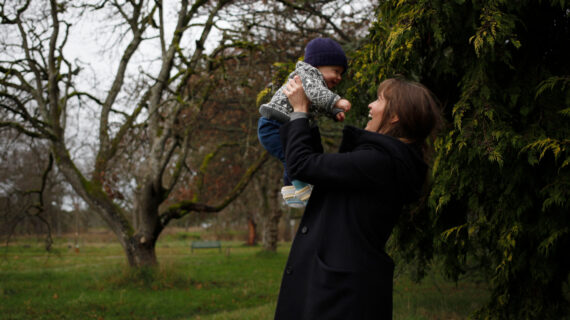Today’s Hub Dialogue is with Peter Jon Mitchell, the program director for Cardus Family, a major research program of the think-tank Cardus.
Mitchell is the co-author with Lita L. Day of a recent Cardus study, For Love or Money? Why Partnered Young Adults Marry . . . or Don’t, which draws on Statistics Canada data and other polling to understand how Canadians—particularly those between the ages of 25 and 34—view the institution of marriage.
This conversation has been revised and edited for length and clarity.
SEAN SPEER: Peter Jon, thanks for joining us to share your insights on this fascinating new report.
PETER JON MITCHELL: Thanks for having me.
SEAN SPEER: Your paper outlines what you describe as a “family revolution” in Canada over the last century or so. What do you mean by that?
PETER JON MITCHELL: What we mean by that is there has been a significant decline of married families as a portion of all families over the past 50 years. In particular, we’ve seen over decades that there are fewer families headed by married couples. Instead we’re seeing more families living in common-law relationships, as well as a growth of unpartnered individuals. In fact, among young adults, for instance, we’re actually seeing quite a growth in unpartnered individuals, which has significant outcomes for the country—including everything from economics, to fertility, and various other important indicators for the health of the country.
SEAN SPEER: Your paper aims to understand the attitudes towards marriage in Canada among adults aged 25 to 34. Why did you think it was important to better understand the attitudes towards marriage in general? And why did you target this particular cohort as part of your research?
PETER JON MITCHELL: We’ve been looking at young adults and their attitudes and behaviours with respect to marriage and partnerships for a number of years now. We’ve produced reports looking at the decline of partnerships in particular, and, in turn, the growing number of unpartnered adults. We’ve also looked at the economic circumstances of young adults and how that influences marriages and other partnerships.
This newest paper gets at the bigger questions: What is it that young Canadians believe about marriage? What influences that understanding? How are they coming to an understanding of what marriage is?
I think that’s important because while marriage is obviously a private relationship, it also has a public face. When I think of that public dynamic of marriage, I think of it as a social institution, by which I mean a model of marriage that’s really seeking to integrate sex, parenthood, and economic cooperation into a permanent relationship.
From the social science data we see that marriage has benefits for parents and for children, but it also has benefits for wider society. Marriage is a key component of family stability—namely, the data tell us that married parents, compared to cohabitating families, tend to be more stable.
SEAN SPEER: Before we delve into the report, if I can just pick up something you said in your last answer: You said that marriage is an arrangement between two adult individuals but that it also has broader spillovers for the society. That is to say, as a wide body of social science research shows, we have a collective interest in the institution of marriage because it is both good for individuals and the society as a whole. Before we get into your new paper could you please give readers a sense of what some of those spillovers are?
PETER JON MITCHELL: We’ve come to a better understanding over the last 20 years or so through research of just how marriage functions and how it affects individuals and society. So even if we just look at physical health indicators, for instance, married people tend to be a little bit healthier, and they tend to recover from illnesses quicker and have those illnesses diagnosed more quickly.
We also have data on child outcomes. In terms of educational attainment, even when we control for socioeconomic background we still see that the best outcomes are associated with intact families. These examples show that marriages can positively effect individuals and society as a whole.
Certainly, not everyone needs to get married in a pluralistic society. People will ultimately choose what works best from them. But the research tells us that generally speaking marriage has an important social component.
Let me give you an example: One thing that we need to be attentive to going forward is that we’re starting to see a marriage divide whereby those with higher educational attainment and higher earning capacity are more likely to get married, and those with lower educational attainment and lower earning capacity are less likely to get married. This is creating a new form of inequality in our society.
The Pew Research Center released a report last month showing a distinct difference between unpartnered people, cohabitating couples, and married couples in the United States across a number of key indicators, including educational attainment, employment, and median income. The report showed that across most of these metrics married couples tend to outperform the others. This is something that we need to pay closer attention to.
Marriage, to put it bluntly, is a growing source of inequality in our society.
SEAN SPEER: Do you have any sense, based on your expertise and research, what’s driving this marriage premium in terms of economic outcomes? Is it due to self-selection? That is to say is it that more successful people tend to opt into the institution of marriage? Or is it that marriage itself is contributing to these more positive outcomes?
PETER JON MITCHELL: I think you can make an argument that it’s both. There are perhaps selection effects going on which can be seen in the growing number of individuals with similar economic backgrounds finding each other, getting married, having kids, and passing on those social capital benefits to their children.
But it’s also true that marriage, as a social institution, does form us in some way. So we definitely see higher earnings for married men versus single men. It may be that married men now have an obligation that wasn’t there before which in turn contributes to more productivity or other things that may lead to increased earnings over time. I think it’s probably a bit of both.
SEAN SPEER: We’ve been talking around your terrific new paper and its key findings so far. While these bigger contextual questions are fascinating, let’s now delve into your paper which is rich with information and data. Of the various findings, which ones surprised you the most and why?
PETER JON MITCHELL: I think the finding that surprised me the most were the reasons that people who don’t intend to marry give for their choice. This was a question asked in Statistics Canada’s General Social Survey and respondents were given various answers to choose from. The most frequently selected response for people is that they don’t believe in the institution of marriage. Something like one out of two men and two out of five women chose this response rather than, say, “I never thought about it”, or “My partner doesn’t want to”, or something like that. In other words, it’s not that people haven’t thought about it. It’s actually that they have thought about it and they’re rejecting the institution of marriage.
That leads me to the question: When we talk about the institution of marriage, what is it that we’re actually talking about and do people understand the reference? We did some polling in 2016 where we compared responses to a 2002 poll on the question, “Is marriage an outdated institution in Canada?” The most significant difference between the two polls was the notable increase in the portion of respondents who selected ‘neither agree nor disagree’ in 2016.
We don’t talk about the institution of marriage and what that actually means these days. The evidence suggests that we need to. There’s a suspicion and distrust of institutions in modern society and that extends to the institution of marriage.
SEAN SPEER: One of the challenges with people saying they don’t intend to marry because they don’t believe in the institution of marriage is that’s not an explanation that necessarily lends itself to a public policy response. When a sizeable share of the population has misgivings about the institution itself, how can policymakers, civil society leaders, and others go about addressing these issues?
PETER JON MITCHELL: I believe that marriage is an institution that requires the support of the other institutions within society. Marriage is just too darn hard not to have the support of broader relationships around you, like a community or friendships. I think these other civil society actors must play a role in both communicating what marriage is and what it’s about, as well as supporting marriage, particularly when things get tough.
Yet we’ve actually seen the reverse of this. There are studies that suggest if you’re wrestling in your own relationship and there are others around you that have gone through divorce or are currently divorcing, you’re more likely to divorce. It’s almost a social contagion effect in some way, and it gives something of a permission structure for marriage dissolution. So, yes, definitely, civil society actors and organizations have a role to play in projecting a positive and constructive vision of marriage and partnerships.
SEAN SPEER: As you mentioned, this paper can serve as an empirical foundation to dig deeper into some of these issues, including trying to better understand people’s attitudes about marriage and relationships and what we can do through policy or other channels to address them. Do you want to elaborate on how this latest report may shape future work by you and the team at Cardus?
PETER JON MITCHELL: We are intently interested in what’s happening in terms of marriage and partnerships among young adults. Cardus will continue to explore these questions further, and certainly try to understand what young adults in Canada believe about marriage and what are the sources of influence.
As I said before, we do see a role for civil society to play in supporting and strengthening marriage. A couple of years ago, for instance, we actually published a paper encouraging the Province of Ontario to include some instruction on marriage within its sex-ed curriculum. That may be a possibility as well.
I am keenly aware that we have this growing economic and social divide within the family structure. Marriage, to put it bluntly, is a growing source of inequality in our society. That’s something we don’t talk a lot about in Canada, but I think it’s something that we should be talking about. And so we’ll certainly continue investigating that as well.
SEAN SPEER: Well, thank you for the fascinating conversation about your latest Cardus report, For Love or Money: Why Partnered Young Adults Marry . . . or Don’t. Readers can find it at Cardus’ website here.




